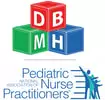Rett Syndrome
Overview: Rare neurodevelopmental disorder. Affects girls almost exclusively; boys lack the extra X chromosome and are thus more impacted, if they survive.
- RettSyndrome.org summary
- MedBullets
Articles
- Chahrour & Zoghbi (2007). The Story of Rett Syndrome: From Clinic to Neurobiology. Neuron, 56,3, 422-437.
- Wan et al (1999). Rett Syndrome and Beyond: Recurrent Spontaneous and Familial MECP2 Mutations at CpG Hotspots. AJHG, 65, 6, 1520–1529.
| "Closing the gap" by Judy Lariviere (Dec. 2014) | |
| File Size: | 4692 kb |
| File Type: | |
Resources
- Current drug clinical trials and other non-drug trials
- Rettsyndrome.org MECP2 Variation Database (RettBase): mutation and polymorphism data from the published literature pertaining to Rett syndrome and related clinical disorders
- InterRett: first-ever project collecting data on a worldwide basis about Rett syndrome
- Natural History Study (NHS): gathers data includes information about nutrition, development, and height & weight measurements
Organizations
|
Research Groups
National
Regional
Family Foundations
|
Clinics
|
